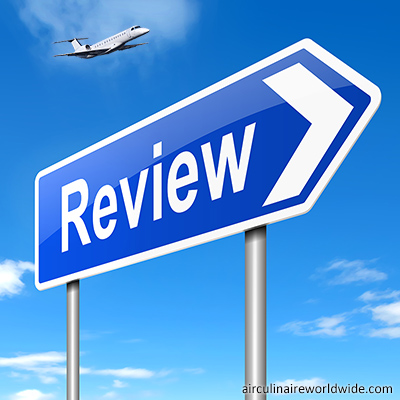As flight attendants, we are trained to perform a silent review before takeoff and landing. This article is a reminder of the importance of the review. As we all know, most accidents occur during takeoff and landing. We must constantly remind ourselves to perform this procedure even when we are occupied with in-flight service or are just plain exhausted after a long flight.
Am I in my proper seat and position?
Flight attendants all know that sometimes we don’t have an option of where to sit in the cabin. We may sit in a variety of locations, including the jump seat, the cabin, the crew rest area, or even sometimes a seat in which we shouldn’t be sitting. When working in an aircraft like a Gulfstream or Global, try to sit in the cabin with your passengers and facing aft. Don’t forget: You are the person responsible for the passengers’ safety, and you will need to evacuate them in case of an emergency. If you sit in the jump seat or crew rest area, you may lose valuable time for evacuating the passengers or even face the possibility of being blocked from reaching them. When you are in a BBJ or Airbus, there are designated jump seats for the crew, and they are the best place for you to sit. Remember: If you are not secure, you won’t be able to safely help your passengers in an evacuation.
What is the signal to brace or evacuate?
That is why Crew Resource Management (CRM) is so important to the cabin crew. Do you have a review of emergency signals with the rest of the crew before every flight? Many of us have different crews on each flight, and, depending on the Pilot in Command (PIC), these signals may change. Make sure you always have a pre-brief and de-brief for each flight. This is critical, even if it’s just a short or routine flight. CRM is as crucial as a flight attendant.
What are my exit responsibilities, and do I have a secondary exit?
Know your aircraft’s primary and secondary exits and review how to open those exits. Knowing your exits and reviewing exit responsibilities will give you valuable time in case of an emergency. Know your procedures and commands if your primary exit is blocked. Also, determine in your silent review who you can get out the fastest and who might need assistance in an emergency.
What are my commands?
Once you are given the signal from the PIC, or you feel that it is warranted, give the commands to your passengers. Most of us use “BRACE, BRACE, BRACE,” and you might need to explain this procedure to your passengers while going through an emergency. A simple brace position for an aft-facing seat is head back in the headrest and palms underneath the thighs. For a forward-facing seat, an easy position is to grab the ankles or place the arms underneath the knees and keep the head down. Once the aircraft comes to a complete stop, instruct your passengers to “Remain Seated” until you assess the situation. (Did you land in water? Are life vests needed? Is your primary exit blocked?) Once you have located a safe exit, give commands to your passengers for evacuation. The quick review after you assess the situation is: “Open Seat Belts,” “Leave Everything,” “Come this Way,” “Step Through,” “Jump and Slide,” and “Run Away.” Make sure you are loud and clear in your commands and take control of the evacuation.
Who are my able-bodied passengers that can assist me in an evacuation?
This might be the hardest part of an emergency for a flight attendant, since everyone reacts differently in an emergency situation. The person you might have picked may turn out to be unable to remain calm enough to assist, and you must quickly find someone else. There is no guarantee that the person you pick is the right person during an emergency in flight. All the same, use your best judgment in choosing a helper, and make sure it is someone who is able to open an exit.
So, remember: Before takeoff or landing, take a moment to perform your silent review. You never know when you will need it! Stay safe, and safe travels.
Questions?
If you have any questions about this article or questions about aviation safety, contact me at jdetloff@airculinaire.com.





